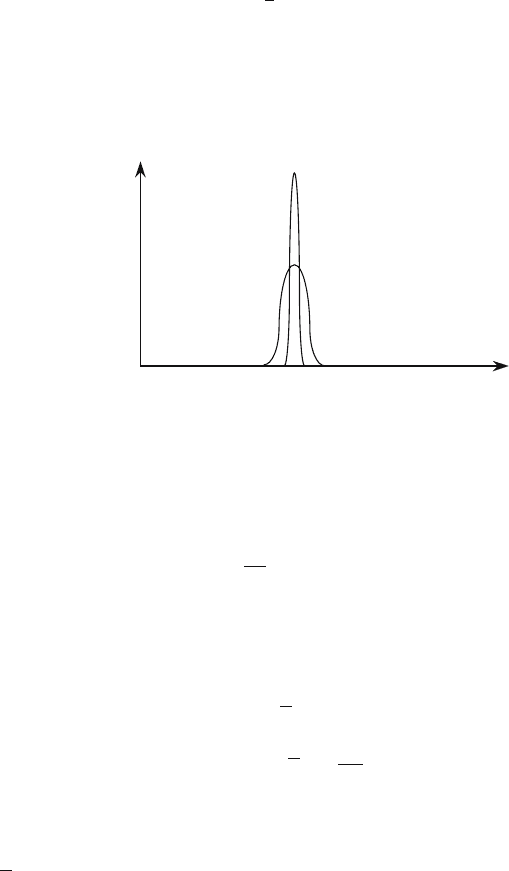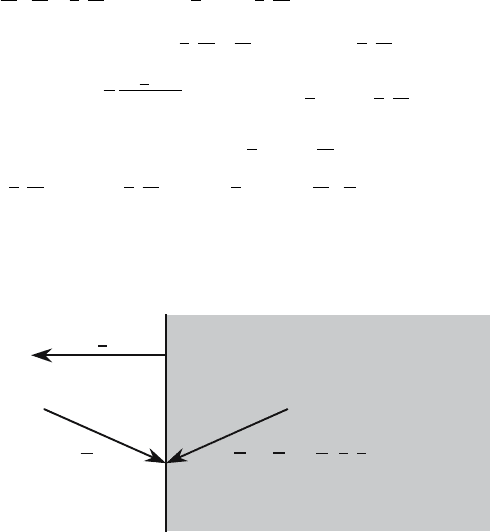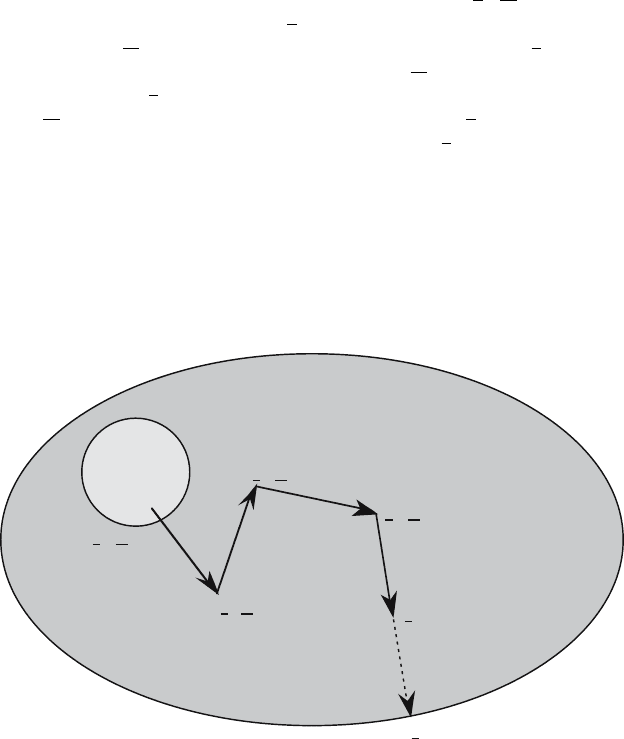Graziani F. (editor) Computational Methods in Transport
Подождите немного. Документ загружается.

512 C.J. Clouse
that passes through the container and strikes a detector on the far side of
the container. This is the classic source/detector problem of trying to get
adequate resolution at a detector that is far from the source; ray effects can
be severe. We have been working on techniques that allow local adaptive
refinement of the directional set of angles and expect to publish our results
in the near future. We also hope to extend the quadratic finite element in
angle [7] work to multi-dimensions to see if the substantial improvements in
convergence as a function of the number of angles holds for higher dimensions.
References
1. Clouse, C.: “Parallel 3D Neutronics on an AMR Grid”, Fifth Joint Russian
American Conference on Computational Mathematics, Sept. 22, 1997.
2. Clouse, C.: “Parallel Deterministic Neutron Transport with Adaptive Mesh
Refinement”, 16th International Conference on Transport Theory, Georgia Tech
University, Atlanta, GA, May 14, 1999.
3. Baker R.: A Block Adaptive Mesh Refinement Algorithm for the Neutral Par-
ticle Transport Equation. Nuc. Sci. & Eng., 141, 1–12 (2002)
4. Aussourd, C.: Styx: A Multidimensional AMR S
N
Scheme. Nuc. Sci. & Eng.,
143, 281–290 (2003)
5. Greenbaum, A. and J. Ferguson: A Petrov-Galerkin Finite Element Method for
Solving the Neutron Transport Equation. Journal of Comp. Phys., 64, 97–111
(1986)
6. Lewis, E. and W. Miller: Computational Methods of Neutron Transport, Wiley
and Sons, New York, 137–140 (1984)
7. Tolar, R. and J. Ferguson.: Quadratic Finite Element Method for 1D Deter-
ministic Transport. Trans. Am. Nucl. Soc., 90 (2004)
8. Berger, M. and P. Collela: Local Adaptive Mesh Refinement for Shock Hydro-
dynamics. Journal of Comp. Phys., 82, 64–84 (1989)
9. Buck, R., E. Lent, T. Wilcox and S. Hadjimarkos: COG User’s Manual, fifth
edition. Lawrence Livermore National Laboratory. (2002)
10. Compton, J. and C. Clouse: Domain Decomposition and Load Balancing in
the AMTRAN Neutron Transport Code, 15th Annual Conference on Domain
Decomposition Methods, Berlin, July (2003)
An Overview of Neutron Transport Problems
and Simulation Techniques
Edward W. Larsen
Department of Nuclear Engineering and Radiological Sciences, University of
Michigan, Ann Arbor, MI 48103-2109
edlarsen@umich.edu
1 Introduction
We briefly summarize (i) the general characteristics of neutron (and photon)
transport processes relevant to nuclear reactor problems, (ii) the nature of
calculation techniques for these problems, and (iii) current areas of research
aimed at improving the accuracy and efficiency of these techniques.
2 Physical and Mathematical Basics
The problem of simulating the interaction of neutrons and photons with
matter has been an important calculational problem since the beginning of
“the nuclear era” – circa 1950. In large part, this is because nuclear reactors
now generate a substantial fraction of the electricity used by humankind.
In this brief review, we discuss (i) the physical and mathematical aspects
of neutron transport processes relevant to nuclear reactor problems, and (ii)
the main computational techniques that have been developed to solve these
problems. A very large literature on this subject has been published ([1–25]
are a few main sources), and we can do little but scratch the surface here.
Nonetheless, we hope to provide a useful overview of this interesting and
challenging field.
In typical neutron transport problems, a physical system V and a source
of neutrons are specified. The source can be internal (within the system), or
external (e.g. a beam of neutrons incident on the outer surface ∂V of the
system). Individual neutrons, after being born, stream through the system
with fixed directions of flight and energies until they interact with nuclei or
leak out of the system. An interaction with a nucleus results in one of three
distinct types of events: (i) a capture event, in which the neutron is captured
by the nucleus, (ii) a scattering event, in which the neutron exchanges some
of its kinetic energy with the nucleus and departs with a different energy
and direction of flight, and (iv) a fission event, in which the nucleus splits
into two daughter nuclei, and one or more high-energy fission neutrons and

514 E.W. Larsen
other radiation are emitted. Each neutron that is emitted in a scattering or
fission event is subject to the same possible physical interactions as the parent
neutron. The general neutron transport problem is: given the physical system
and the neutron sources, determine the neutron flux at all points within the
system. For shielding problems, the neutron and photon fluxes must both be
calculated. (Photons, which are a byproduct of inelastic scattering and fission
events, undergo a similar transport process as neutrons, except that photons
do not induce fission.)
For steady-state problems, the mathematical equations that describe the
neutron transport process consist of the linear Boltzmann equation for the
angular flux:
Ω
·∇ψ(r,Ω,E)+Σ
t
(r,E)ψ(r,Ω,E)
=
∞
0
4π
Σ
s
(r,Ω
· Ω,E
→ E)ψ(r,Ω
,E
)dΩ
dE
+
χ(r
,E)
4π
∞
0
4π
νΣ
f
(r,E
)ψ(r,Ω
,E
)dΩ
dE
+
Q(r
,E)
4π
,r
∈ V,Ω∈ 4π, 0 <E<∞ , (1a)
and a boundary condition that prescribes the flux incident on the outer
boundary of the system:
ψ(r
,Ω,E)=ψ
b
(r,Ω,E) ,r∈ ∂V , Ω · n < 0 , 0 <E<∞ . (1b)
The independent variables in (1) are the 3-D spatial variable r
=(x, y, z),
the 2-D angular or direction-of-flight variable Ω
(a unit vector), and energy E.
Thus, unless spatial symmetries exist that reduce the number of independent
variables, phase space is 6-dimensional. The to-be-determined angular flux ψ
is defined by:
1
v
ψ(r
,Ω,E)dV dΩdE = the number of neutrons located in dV about r,
traveling in a direction in dΩ about Ω
with an energy in dE about E.(2)
where v =
"
2E/m is the neutron speed. (Thus, ψ/v = N is the neutron
density.) The remaining terms in (1) are specified cross sections or sources.
Thus, Σ
t
(r,E)isthetotal cross section, defined by:
Σ
t
(r,E)ds = probability that a neutron at r with energy E
will experience an interaction with a nucleus
while traveling a distance ds;(3)
Σ
s
(r,Ω
· Ω,E
→ E)isthedifferential scattering cross section, defined by:

Neutron Transport Problems and Simulation Techniques 515
Σ
s
(r,Ω
· Ω,E
→ E)dsdΩdE = probability that a neutron at r ,
traveling with direction Ω
and energy E
, will scatter into
dΩ about Ω
and dE about E while traveling a distance ds; (4)
Σ
f
(r,E)isthefission cross section, defined by:
Σ
t
(r,E)ds = probability that a neutron at r with energy E
will initiate a fission event while traveling a distance ds;(5)
ν is the mean number of fission neutrons emitted in a fission event, χ(r
,E)
is the fission spectrum, defined by:
χ(r
,E)dE = the probability that a fission neutron, emitted at r,
will have energy in dE about E;(6)
Q(r
,E)isanisotropic interior source:
Q(r
,E)dV dE = the rate at which neutrons are isotropically
emitted in dV about r
and dE about E;(7)
and ψ
b
(r,Ω,E) is the prescribed incident flux, which for r ∈ ∂V , n =the
unit outer normal vector to ∂V at S, Ω
·n < 0, and dS an increment of area
on ∂V at r
, is defined by:
|Ω
· n|ψ
b
(r,Ω,E)dS dΩdE = the rate at which neutrons,
traveling in dΩ about Ω
and dE about E,
flow into V through dS.(8)
Equations (1) describe a steady-state neutron transport problem with
no photons. If photons were included, a second transport equation for the
photon angular flux would be required; this equation would not contain the
fission term on the right side of (1a), but it would contain extra source terms,
depending linearly on the neutron flux ψ, that describe the production of
photons due to neutron fission and inelastic scattering.
Equations (1) are linear because neutrons are assumed to interact only
with nuclei, not with each other. In a cm
3
of a typical reactor core, there
are roughly 10
23
nuclei, and perhaps 10
10
(plus or minus a few orders of
magnitude) neutrons. Therefore, neutron-neutron interactions, which would
be nonlinear, are sufficiently rare that they can be neglected.
If time-dependent problems were to be considered, extra equations for
the neutron precursors – fission neutrons that are emitted by radioactive
decay several seconds after the initiating fission event took place – would
have to be formulated and coupled to the time-dependent version of (1a).
The study of time-dependent reactor problems forms the specialized field of
reactor kinetics.

516 E.W. Larsen
In many reactor design and safety problems, the space- and time-dependent
temperature of the reactor, T (r
,t) must be considered as an extra unknown.
This is because cross sections are temperature-dependent; when tempera-
ture rises, Doppler-broadening causes narrow absorption resonances to widen,
leading to a small but significant increase in the ability of the reactor to ab-
sorb neutrons. When T is included, an extra equation for T must be formu-
lated, and the cross sections in (1a) depend nonlinearly on T .
T
1
< T
2
E
Σ
γ
(E,T)
T
1
T
2
Fig. 1. Doppler-Broadening of Capture Cross Section
In typical neutron transport problems, the total cross section and mean
free path satisfy
0.1cm
−1
<Σ
t
< 10.0cm
−1
, (9a)
0.1cm<λ=
1
Σ
t
= mean free path < 10.0cm, (9b)
with nominal values of Σ
t
≈ 1cm
−1
and λ ≈ 1 cm. Thus, neutron mean free
paths are generally orders of magnitude greater than electron or ion mean
free paths; this is because neutrons, which have no electrical charge, only
interact with atomic nuclei.
The mean scattering cosine
µ
0
for neutron low-energy elastic scattering
is:
µ
0
=
2
3A
, (10)
where A is the mass number (number of neutrons plus protons) of the scatter-
ing nucleus. Thus, neutron scattering is generally much more isotropic than
typical electron scattering, which tends to be highly forward-peaked, with
µ
0
≈ 1.
When fast neutrons scatter off nuclei, the neutrons typically exchange a
significant fraction of their kinetic energy with the nuclei. For example, a
1.0 Mev neutron scattering in hydrogen (uranium) requires about 30 (2500)
scattering events to slow down to thermal (10
−2
ev) energies. (The lighter the
nucleus, the greater the energy exchange.) Electrons generally require orders
of magnitude more scattering events to undergo comparable energy losses.

Neutron Transport Problems and Simulation Techniques 517
Overall, the relatively large mean free path, large scattering angle, and
large energy loss of neutrons (compared with electrons) make (1) for neutrons
considerably more amenable to direct numerical simulation than the corre-
sponding equations for electrons. (Numerical methods for electron transport
problems nearly always use approximations necessitated by the extremely
small mean free path, scattering-angle, and energy-loss per collision.)
Core
Shield
4 m
Assembly
1 m
ln
ψ
2 m
Fig. 2. Nuclear Reactor Schematic (Many Details Not Shown)
Figure 2 – a cartoon of a slice through a nuclear reactor – indicates a
central cylindrical core, consisting of a large array of long fuel assemblies
that contain the reactor fuel. (One fuel assembly is depicted.) Surrounding
the core is a reflector, and then a shield. (Only the shield is depicted.) Not
shown in the figure is the shielding on the top and bottom of the core. Also
not shown are the multitude of coolant channels passing through the core;
cold fluid entering the core becomes hot as it passes through the core; when
it exits, the hot fluid powers steam turbines, which then generate electricity.
In general, the reactor core contains a great deal of small-scale mechanical
structure; the reflector and shield, however, are basically homogeneous.
The fuel assemblies in reactor cores are generally arranged to maximize
efficiency and to ensure that the neutron flux is relatively “flat” across the
core. (However, due to the changes in cross sections from one material to
another, important space-dependent effects definitely occur.) In the neutron
shield, surrounding the core, the neutron and photon density fall off – roughly
exponentially – by about 10 orders of magnitude from the interior wall of the
shield to the exterior wall. This fall-off (log scale) is depicted in Fig. 2.

518 E.W. Larsen
Equations (1) describe a fixed-source problem for a physical system V .
Practical nuclear reactor neutron transport problems generally occur in three
categories:
1. Eigenvalue Calculations. Here the physical system V is the entire reactor,
the internal and boundary sources are set to zero, and the eigenvalue k
(the reactor criticality) is introduced in the denominator of the fission
term. Equations (1) become:
Ω
·∇ψ(r,Ω,E)+Σ
t
(r,E)ψ(r,Ω,E)
=
∞
0
4π
Σ
s
(r,Ω
· Ω,E
→ E)ψ(r,Ω
,E
)dΩ
dE
+
1
k
χ(r
,E)
4π
∞
0
4π
νΣ
f
(r,E
)ψ(r,Ω
,E
)dΩ
dE
,
r
∈ V,Ω∈ 4π, 0 <E<∞ , (11a)
ψ(r
,Ω,E)=0 ,r∈ ∂V , Ω · n < 0 , 0 <E<∞ . (11b)
The purpose of k is to adjust the amplitude of the fission process (which
adds new neutrons to the system), so that this process and the capture
and leakage processes (which delete neutrons from the system) exactly
balance, permitting a steady-state solution ψ to exist. The problem is
to determine a positive value of the eigenvalue k such that (11) have a
positive eigenfunction solution ψ.
If k>1, the fission process is suppressed to obtain a steady-state
solution, and the reactor is said to be supercritical.Ifk<1, the fission
process is enhanced to obtain a steady-state solution, and the reactor is
said to be subcritical.Ifk = 1, the the reactor is critical. A power reactor,
operating at steady state, is critical (k = 1). To increase the power out-
put of a critical reactor, control rods (which absorb neutrons) are slightly
withdrawn, causing k to become slightly greater than 1, thus causing the
neutron population within the reactor to slowly grow. Conversely, to de-
crease the power output of a critical reactor, control rods are slightly in-
serted, causing k to become slightly less than 1, thus causing the neutron
population within the reactor to slowly decline. Determining the critical-
ity k of a reactor is one of the fundamental problems in reactor design and
operation.
2. Assembly Calculations. Here the physical system V is a single reactor
assembly, all internal sources are set to zero, the eigenvalue k is introduced,
and reflecting (symmetry) boundary conditions are imposed on the outer
edges of the assembly to simulate an infinite periodic system. If Ω
r
is the
specular reflection of the incident direction vector Ω
across the surface ∂V
of the assembly (see Fig. 3), then (1) become:

Neutron Transport Problems and Simulation Techniques 519
Ω ·∇ψ(r,Ω,E)+Σ
t
(r,E)ψ(r,Ω,E)
=
∞
0
4π
Σ
s
(r,Ω
· Ω,E
→ E)ψ(r,Ω
,E
)dΩ
dE
+
1
k
χ(r
,E)
4π
∞
0
4π
νΣ
f
(r,E
)ψ(r,Ω
,E
)dΩ
dE
,
r
∈ V,Ω∈ 4π, 0 <E<∞ , (12a)
ψ(r
,Ω,E)=ψ(r,Ω
r
,E) ,r∈ ∂V , Ω · n < 0 , 0 <E<∞ . (12b)
The problem is to determine a positive value of k such that (12) have a
positive (eigenfunction) solution ψ. [Note that this assembly-specific value
of k is generally not the criticality k of the reactor in (11).]
Ω
r
=Ω−
2
(Ω ⋅ n)nΩ
n
V
∂
V
Fig. 3. Reflecting (Symmetry) Boundary Condition)
The purpose of this calculation is to model the neutron flux within
a single assembly. If all assemblies were identical, and if the the reactor
core were infinite in extent, then (12) would correctly predict the criti-
cality k of the entire (infinite) reactor, and the eigenfunction ψ, extended
periodically outside of the single assembly V , would correctly predict the
(periodic) eigenfunction of the infinite reactor. However, reactor cores are
not infinite, and fuel assemblies are not identical. Therefore, the neutron
flux is not a periodic function of space. Nonetheless, for each assembly,
(12) are solved, and the results are processed to yield homogenized diffu-
sion coefficients that, by means of a homogenized diffusion approximation,
predict (approximately) the variation of the amplitude of the neutron flux
across the core. When this result is combined with the detailed eigen-
functions [obtained from (12) for each assembly], estimates of the neutron
flux are obtained that are sufficiently accurate for many applications. This
process, of solving many eigenvalue problems (one for each assembly) and
then “stitching” together a global solution, is often much more efficient
than solving (11) for the entire reactor.

520 E.W. Larsen
3. Shielding Calculations. Here the physical system V is the reactor shield,
all internal sources (within the shield) are set to zero, the fission term is
set to zero (Σ
f
= 0 in a shield), and a prescribed incident neutron flux ψ
b
,
representing the neutron flux flowing out of the core and into the shield,
is prescribed. Equations (1) become:
Ω
·∇ψ(r,Ω,E)+Σ
t
(r,E)ψ(r,Ω,E)
=
∞
0
4π
Σ
s
(r,Ω
· Ω,E
→ E)ψ(r,Ω
,E
)dΩ
dE
,
r
∈ V,Ω∈ 4π, 0 <E<∞ , (13a)
ψ(r
,Ω,E)=ψ
b
(r,Ω,E) ,r∈ ∂V , Ω · n < 0 , 0 <E<∞ . (13b)
The purpose of this calculation is to determine the extent to which the
shield absorbs the neutron and photon radiation from the reactor core,
and in particular, to calculate the radiation that successfully transmits
through the shield. In these problems, neutrons are usually suppressed
quickly; it is the high-energy photons, which are more deeply penetrat-
ing, that are problematic. To be complete, a second transport equation
and boundary conditions, closely resembling (13), should be added to de-
scribe the photon flux. This second transport equation contains a source
term, depending linearly on the solution ψ of (13), which describes the
production of photons due to inelastic neutron scattering.
Unlike eigenvalue and assembly calculations, whose purpose is to deter-
mine the detailed neutron population in the reactor core, shielding cal-
culations are primarily performed to ensure that the reactors are safe –
that people can safely work outside the reactor, without an undue risk of
exposure to the radiation generated within the reactor.
For large commercial power reactors, practical neutron transport prob-
lems are rarely solved for the entire reactor system (full core plus shield); to
attempt this would generate a numerical problem that is much too large and
complex. Instead, much smaller “pieces” of the reactor are treated (e.g. a
single assembly, or the reactor shield) and the results combined in ways that
adequately approximate the neutron flux across the entire system.
This completes our discussion of the basic mathematical and physical
description of neutron transport problems associated with the design and
operation of nuclear reactors. More detailed information on these topics can
be found in standard nuclear engineering texts: [1, 6–8], and [21].
Next, we discuss the two main computational approaches for simulat-
ing practical neutron transport problems: stochastic (i.e. Monte Carlo)and
deterministic techniques. Although these two approaches simulate the same
physical problem, they are (i) fundamentally different in terms of their ap-
proach to the problem and their solution techniques, (ii) have been developed
by distinct computer code groups, (iii) exist only in separate computer codes,

Neutron Transport Problems and Simulation Techniques 521
and (iv) have complementary advantages and disadvantages. Because of this
complementarity, Monte Carlo and deterministic methods have each found
favor for certain types of problems. First, we discuss the basic concepts that
form the foundation of these two approaches.
3 Basics of Stochastic and Deterministic Methods
The physical process of neutron transport has at least one superficially con-
tradictory aspect: the history of a single neutron is effectively a sequence of
random events, while the solution of (1) contain no randomness. For example
(see Fig. 4), a single neutron is born at a random point (r
0
,Ω
0
,E
0
) in phase
space, it streams to a random point r
1
where (let us say) it scatters into direc-
tion and energy Ω
1
and E
1
; then it streams to a random point r
2
where (let
us again say) it scatters into direction and energy Ω
2
and E
2
;thenitstreams
to a random point r
3
where (let us again say) it scatters into direction and
energy Ω
3
and E
3
; finally, it streams to a random point r
4
where it might be
captured – or, instead – it could stream to the point r
5
where it leaks out of
the system. Each particle history requires several random “decisions:” what
is the distance between collisions? When a collision occurs, is the collision a
scattering event, a fission event, or a capture event? If the particle scatters,
what are its outgoing energy and direction? For each neutron, these ques-
tions are answered by the rules of probability dictated by nature (through
the numerical values of the cross sections), and except for exceedingly rare
cases, the answers are different.
Source
V
(r
0
,Ω
0
, E
0
)
(r
1
,Ω
1
,E
1
)
(r
2
,Ω
2
,E
2
)
(r
3
,Ω
3
, E
3
)
(r
4
)
(r
5
)
birth
scatter
scatter
scatter
capture
leaks out
Fig. 4. A Neutron History
